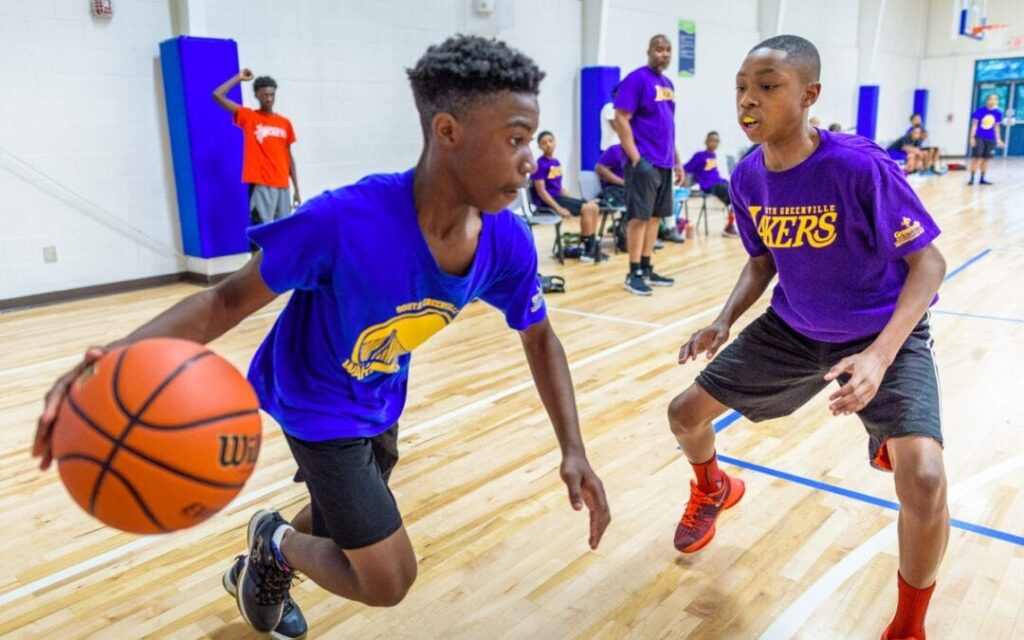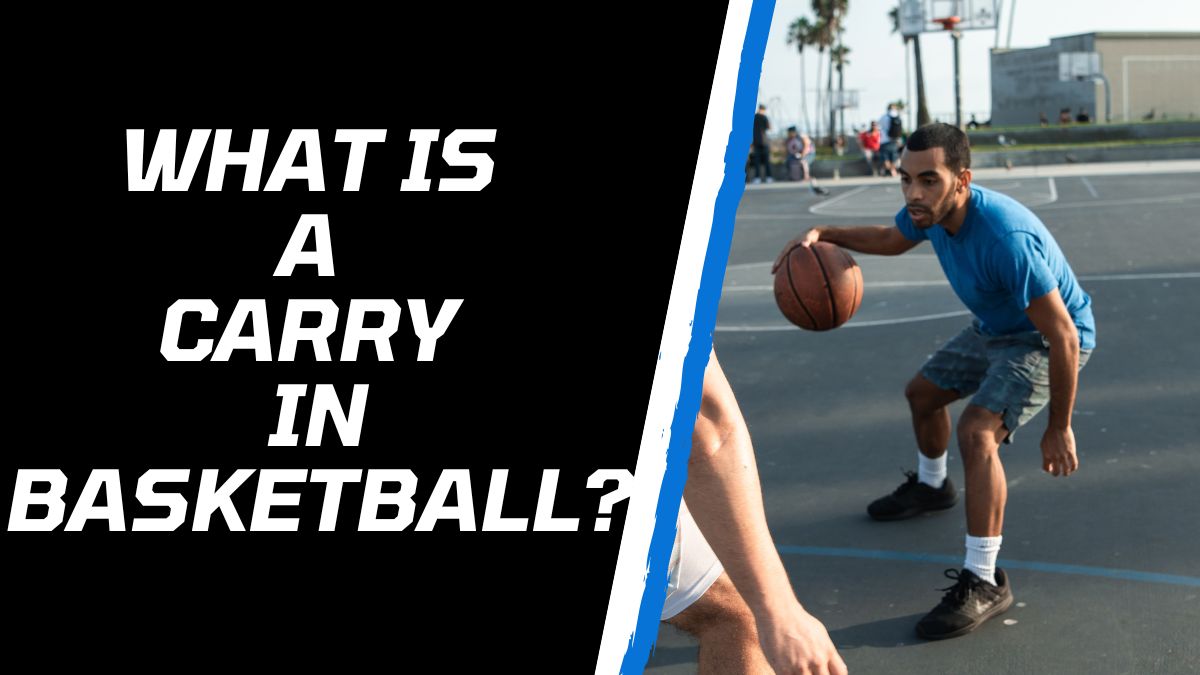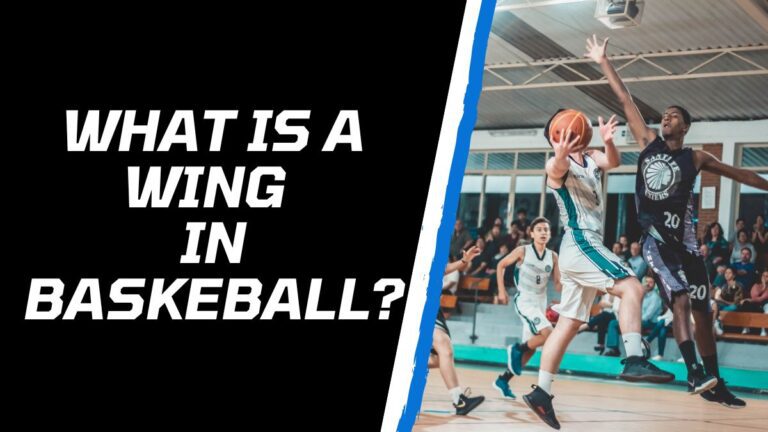What is a Carry in Basketball? Everything You Need To Know
Whether you’re a die-hard fan or new to the game, understanding the rules of the game is essential. One term that can be confusing is “What is a carry in basketball?” In this blog post, we’ll break down this basketball violation, explaining its importance during play. So, let’s dive in and uncover the mystery behind the “carry” violation.
What is a Carry in Basketball?

A carry in basketball is a violation that occurs when a dribbler continues to dribble after allowing the ball to come to rest in one or both hands and/or places their hand underneath the basketball. Carrying is similar to a double dribble because the player momentarily stops dribbling, then resumes dribbling.
If the player is in motion while carrying the ball, then it is similar to traveling (3+ steps). A type of carrying, known colloquially as palming, involves holding the ball in one hand in a grip without allowing it to fall naturally.
Types of Carrying Violations
There are two main types of carrying violations – palming and double dribble.
Palming is a violation that occurs when a player holds the ball in one hand in a grip without allowing it to fall naturally. This means that the player is not allowing the ball to bounce naturally, but is instead holding it in their hand and moving it around. Palming is often called when a player is trying to dribble past a defender, and they use their palm to control the ball.
Double dribble is a violation that occurs when a player picks up the ball after dribbling, then puts it back down and starts dribbling again. This means that the player has stopped dribbling the ball, but then starts dribbling again without passing or shooting the ball. Double dribbles are often called when a player is trying to create space between themselves and a defender, and they pick up the ball to stop dribbling, but then put it back down and start dribbling again.
Here are some examples of palming and double dribble:
- A player is dribbling the ball up the court, and they bring the ball up to their chest and hold it in their palm. This is a palming violation.
- A player is dribbling the ball, and they pick up the ball to stop dribbling. They then put the ball back down and start dribbling again. This is a double dribble violation.
It is important for players to be aware of the rules of palming and double dribble in order to avoid committing these violations. These violations can be costly, as they can lead to turnovers that give the opposing team an opportunity to score.
Penalties for Carrying

A carry is a turnover, meaning that the ball is awarded to the opposing team. The ball is awarded to the opposing team at the spot where the carry occurred.
The penalty for carrying is the same as the penalty for a double dribble. This is because both carrying and double dribble are violations that involve the player illegally stopping and starting their dribble.
In some cases, a carry may not be called if the referee believes that the player did not intentionally commit a violation. However, this is rare, and most carries will result in a turnover.
Common Mistakes That Lead to Carries
There are a few common mistakes that players make that can lead to carries. These mistakes include:
- Bringing the ball down too low: When a player brings the ball down too low, it is more likely that they will palm the ball or stop dribbling.
- Using two hands to dribble: Using two hands to dribble can make it more difficult to control the ball and can lead to palming.
- Not keeping the ball up high: Keeping the ball up high will help to prevent the ball from coming to rest in the player’s hands.
- Changing the pivot foot: A player’s pivot foot is the foot that they cannot move when they are dribbling. If a player changes their pivot foot, they will have committed a double dribble, which is a turnover.
How to Avoid Carrying

There are a few things that players can do to avoid carrying:
- Keep the ball up high: This will help to prevent the ball from coming to rest in the player’s hands.
- Use a two-handed dribble: This will help to keep the ball under control and prevent the player from palming it.
- Be aware of the rules: Players should be familiar with the rules of carrying so that they can avoid committing a violation.
- Practice dribbling with control: The more you practice dribbling, the better you will be at keeping the ball under control and avoiding carries.
- Watch for referees’ signals: Referees will often signal when they believe a player has committed a carry. If you see a referee signal for a carry, stop dribbling immediately.
- Don’t be afraid to ask for help: If you are unsure about whether or not you are committing a carry, ask a coach or referee for clarification.
Is a High Dribble a Carry?
A high dribble is not a carry in itself. However, if a player brings the ball up too high and then brings it down to their waist or below, they may be committing a carry. This is because the ball has come to rest in the player’s hands.
It is important to note that the rules of carrying are somewhat subjective, and what constitutes a carry can vary from referee to referee. However, in general, a high dribble is not a carry as long as the ball is not allowed to come to rest in the player’s hands.
How Long Is a Carry in Basketball?
There is no specific time limit for a carry in basketball. A carry is a violation that occurs when a player illegally stops and starts their dribble. This means that the ball cannot come to rest in the player’s hands for any amount of time.
Why Is Carrying Illegal in Basketball?
Carrying is illegal in basketball because it gives the player an unfair advantage. When a player carries the ball, they are able to control the ball more easily and can move it around without having to bounce it. This can make it difficult for defenders to steal the ball and can give the offensive player a better chance of scoring.
What Is the Difference Between Carrying and Traveling in Basketball?

Carrying and traveling are two different violations in basketball. Carrying occurs when a player illegally stops and starts their dribble while traveling occurs when a player takes more than two steps without dribbling the ball.
The main difference between carrying and traveling is that carrying involves the ball coming to rest in the player’s hands while traveling does not. When a player carries the ball, they are essentially picking it up and then putting it back down. This is not allowed in basketball, as it gives the player an unfair advantage.
Here is a table that summarizes the key differences between carrying and traveling:
| Carrying | Travelling |
| The ball comes to rest in the player’s hands. | The player takes more than two steps without dribbling the ball. |
| A turnover is called. | A personal foul is called. |
| The ball is awarded to the opposing team. | The ball is awarded to the player who was fouled. |
Final Thoughts
Carrying is a common violation in basketball, but it is one that can be easily avoided by understanding the rules and practicing good ball control. Players should keep the ball up high and avoid bringing it down to their waist or below. They should also avoid palming the ball, which is when the player grips the ball with one hand and prevents it from bouncing.
If a player does carry the ball, the referee will blow their whistle and award the ball to the opposing team. The ball will be awarded to the opposing team at the spot where the carry occurred.
By understanding the rules of carrying and practicing good ball control, players can reduce their chances of committing this violation and help their team stay in the game.
Read more of our basketball articles on:







